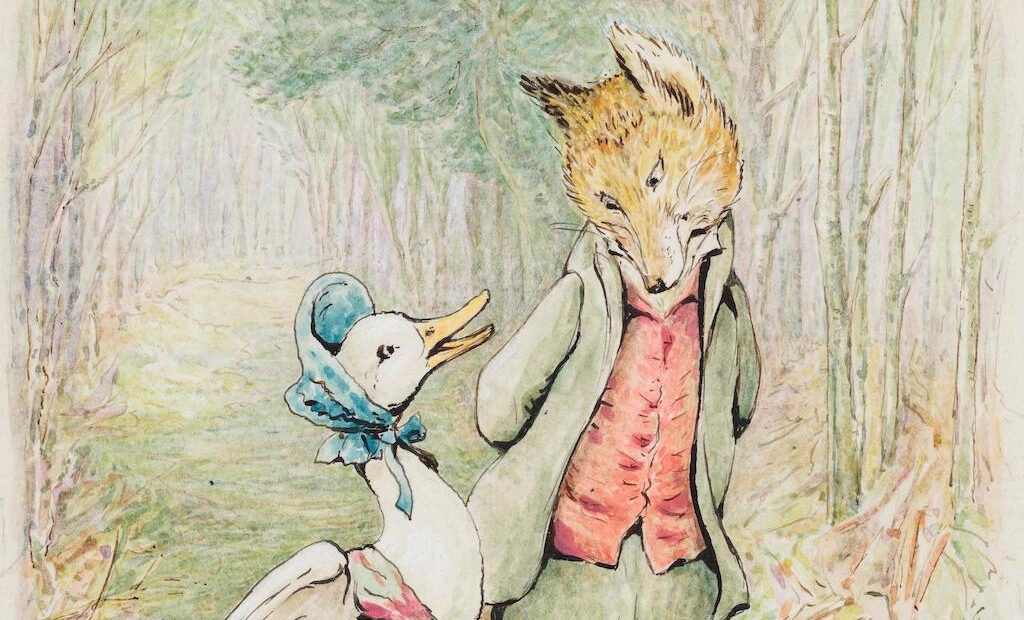Beatrix Potter: Drawn to Nature at the V&A

Beatrix Potter: Drawn to Nature begins in a forest-green room lined with photographs of the young artist, information about her life in London and personal artefacts like old diary entries (written in code). Sketchbooks from when Potter was eight and nine are displayed, as are her early artistic studies of the things she saw in the museums and zoo near her house – including a Roman shoe. Top-line information about Potter is delightfully displayed on animated screens, with little mice and other animals scuttling in and out of shot.
Through drawings, photographs and quotes, viewers are given an insight into the artist’s deep love for the countryside and distaste for city life. One also sees sketches and photographs of the places Potter and her family travelled to around the UK, including the Welsh garden that served as the inspiration for The Tale of the Flopsy Bunnies. In a room lined with bookshelves and cabinets, visitors learn about the Potter family’s scientific background, and are shown vibrant illustrations of mushrooms, studies of bats and a rabbit pelt. Drawn to Nature shows how Potter’s interest in science shaped her work and the matter of fact attitude her and her brother had to the life and death of their pets.
The early parts of the exhibition have a lot of information, which can take a while to get through, but they set the viewer up to leave feeling they have a fuller understanding of the woman behind the bunny books. There’s a bit of a journey to get to Peter Rabbit, but this part of the display does not disappoint. Alongside displays of Potter’s greeting cards, early sketches and different print versions of the books, one can also sit and listen to the tales or pick up one of her books and skim through it, and there are even clothes for little ones to dress up in. Next to the more factual information cards, there are also fun explanations and thought experiments for children. Potter would’ve been proud of the conservationist message towards the end of the experience, and the multi-wall screen displaying beautiful shots of the Lake District.
While this exhibition gives a good insight into Potter’s professional life, it feels a little impersonal. There are references to the sexism that she experienced as a scientist (she wasn’t even allowed to present her own papers to the scientific community), but it doesn’t go far enough. There are some limited references to Potter’s engagement to Norman Warne, who would die before they could get married, and to her eventual marriage to William Heelis, but these are treated as afterthoughts.
In some ways this is good: why should a woman’s personal life rank as highly as her professional achievements? On the other hand, Potter’s experience as an unmarried professional female writer in her 30s and 40s is unique and interesting, and some more information around that would help the exhibition feel warmer and leave visitors feeling they had really understood who she was. Ultimately, this is a great experience for children, those who grew up with Potter’s books and anyone looking for a dose of nostalgia, and even for those of us who aren’t familiar with her work. Potter was an impressive, talented and driven woman, and it’s right for her life to be celebrated.
Sophia Moss
Beatrix Potter: Drawn to Nature is at the V&A from 12th February until 8th January 2023. For further information visit the exhibition’s website here.
























Facebook
Twitter
Instagram
YouTube
RSS